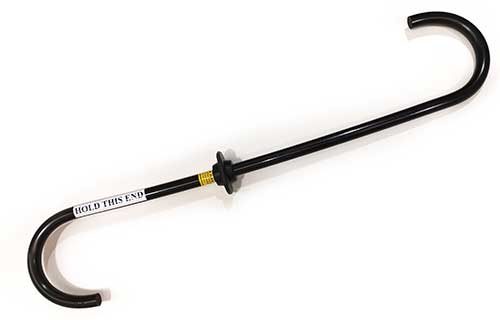Electrical safety
What are electrical safety hooks, and how do they work?

Responding is Sonny Brindle, account manager, Reece Safety, West Yorkshire, England.
Electrical safety is an integral part of every workplace and needs to be diligently followed because of electricity’s amazing, yet deadly, qualities. As a firm part of our everyday life, electricity needs to be handled with care to avoid incidents that can result in serious injury or even death, so it’s important to know how you can help in a life-threatening situation.
What is an electrical safety hook?
Electrical safety hooks, or rescue safety hooks, are an essential electrical safety item used to retrieve victims of electric shock while protecting the rescuer. The hook prevents backfeeding electricity from harming the rescuer. Commonly found in vehicle maintenance shops and electrical substations, the hooks should be kept where workers are potentially exposed to electric work and live wires.
How do they work?
Rescue safety hooks are constructed from polyester or a glass-fiber foam-filled tube and insulated up to 225 kilovolts. They aim to stop electric currents from passing through to the rescuer when retrieving an injured person who has an electric current still in his or her body immediately after an electric shock. Their ‘S’ shape design makes it easier for the rescuer to grip the victim’s arm, leg or waist for a secure hold and quick retrieval. Various electrical safety hooks are available for different measures of kilovolts, depending on the requirements for the volume of electricity in your work area.
When to use an electrical safety hook
When rescuing an electric shock victim, it’s vital to be confident using an electrical safety hook. First, check the area of the incident and source of the electric shock. If the victim is still attached to or in contact with the electrical source, electricity could transfer to you, so do not touch the victim.
Also, never use water on an electrical fire, even if the victim is in danger of being burned. Instead, use a fire extinguisher to ensure the flames don’t spread.
Before using the safety hook, turn off the main source of power for the electric unit, whether it’s a fuse box or circuit breaker. Then, if possible, get the victim to move away from the electric source. Once the victim is no longer in contact with the source, use the safety hook to further pull him or her away to safety.
Once the victim is removed from immediate danger, place him or her in the recovery position and perform CPR if necessary.
How to prevent electrical injury
Electrical injury can be prevented by using insulated tools and working on rubber matting while wearing personal protective equipment that leaves no visible skin exposed, such as arc flash clothing. Safety signs are also used to promote a safe working environment by warning and advising workers about potentially dangerous environments before entering high-risk areas. Actively using these steps and being careful around live wires in the workplace will result in considerably less risk of electrical injury.
Editor's note: This article represents the independent views of the author and should not be construed as a National Safety Council endorsement.
Post a comment to this article
Safety+Health welcomes comments that promote respectful dialogue. Please stay on topic. Comments that contain personal attacks, profanity or abusive language – or those aggressively promoting products or services – will be removed. We reserve the right to determine which comments violate our comment policy. (Anonymous comments are welcome; merely skip the “name” field in the comment box. An email address is required but will not be included with your comment.)

